Laminate vs Veneer for Cabinet Surfaces: The Ultimate Canadian Guide
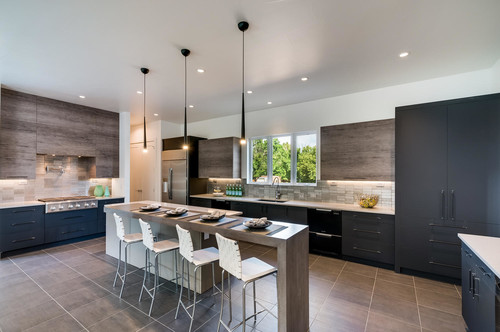
The choice of Laminate vs Veneer for Cabinet Surfaces is a critical decision for Canadian homeowners designing a kitchen that balances durability, aesthetics, and budget. At rtadepot.ca, we provide elegant solutions that transform your space. Choosing the right finish is pivotal for your home environment, impacting everything from daily maintenance to long-term value. This guide explores the Laminate vs Veneer for Cabinet Surfaces comparison to help you decide on the best fit for your home.
The journey to a new kitchen often begins with frustration. Your current cabinets may feel outdated, clashing with your modern lifestyle. Perhaps you are constantly battling clutter due to inefficient storage, a common issue in both sprawling suburban homes and compact city condos across Canada. This guide is for those facing the Laminate vs Veneer for Cabinet Surfaces dilemma.
A poorly designed kitchen can make cooking feel like a chore rather than a creative joy. You envision a well-organized, aesthetically pleasing space that reflects your personal style and brings comfort to your family. However, finding high-quality, custom-fit solutions in Canada without the bespoke price tag is a significant challenge. This is where understanding your material choices in the Laminate vs Veneer for Cabinet Surfaces debate becomes paramount.
At rtadepot.ca, we specialize in turning these frustrations into triumphs. We help you optimize storage and elevate your home’s aesthetic with a touch of modern luxury. Our focus is on providing durable, beautiful, and easy-to-clean cabinet solutions that stand the test of time. They are perfect for busy Canadian households that experience a full range of seasons. The Laminate vs Veneer for Cabinet Surfaces choice is central to this process.
Whether you prefer the satisfaction of ready-to-assemble (RTA) convenience or our seamless professional installation service, we offer reliable support. Our expert design consultations help you select the perfect materials, colors, and styles for your project. Let us guide you through every aspect of the Laminate vs Veneer for Cabinet Surfaces decision.
1. Understanding the Core Materials: Laminate and Veneer Explained
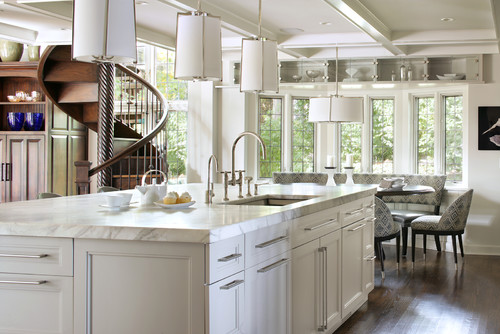
Before a direct comparison, it is essential to understand these materials in depth. Though their names are sometimes used interchangeably, their composition, manufacturing, and performance characteristics are fundamentally different. This granular understanding is key for any Canadian homeowner considering Laminate vs Veneer for Cabinet Surfaces.
1.1. What Exactly Is A Laminate Cabinet Surface?
A laminate surface is a man-made product created by fusing layers of paper and resin under high pressure. It is prized for its exceptional durability, resistance to scratches and stains, and vast design versatility, making it a highly practical and cost-effective choice for modern cabinetry.
Laminate is a marvel of modern engineering, a multi-layered synthetic product designed for ultimate durability. The most common type for cabinets is high-pressure laminate (HPL), created by fusing multiple layers under intense heat (upwards of 140°C) and pressure (over 1,000 pounds per square inch). This process creates an incredibly resilient and stable surface.
The layers consist of a clear protective overlay, a decorative paper layer printed with a design, and several layers of phenolic resin-saturated kraft paper at the core. This construction makes it a top contender in the Laminate vs Veneer for Cabinet Surfaces debate, especially for high-traffic areas. The final product is a non-porous, hygienic, and easy-to-clean surface.
The decorative layer is where laminate’s versatility truly shines. It is essentially a highly detailed photograph, allowing it to replicate any look imaginable. It can mimic the grain of exotic woods, the intricate patterns of natural stone, or offer a flawless, solid color. Modern printing technology has advanced so that premium laminates are virtually indistinguishable from their natural counterparts. This process ensures perfect uniformity, a significant factor when choosing Laminate vs Veneer for Cabinet Surfaces.
1.2. What Are Veneer Cabinet Surfaces?
Wood veneer is a thin slice of real hardwood, typically less than 3 mm (1/8 inch) thick. These delicate sheets are carefully sliced from a log and then bonded to a stable substrate, usually medium-density fiberboard (MDBF) or particleboard, to create panels for cabinetry. Because veneer is genuine wood, it retains the authentic grain patterns, knots, and unique characteristics of the tree it came from.
The method used to slice the veneer from the log dramatically affects its final appearance. Rotary peeling shaves the log in a continuous sheet, creating a broad, dramatic grain. Plain slicing provides a classic, cathedral-like pattern. Quarter slicing yields a straight, linear grain that is highly sought after for modern designs. This authenticity is a major draw in the Laminate vs Veneer for Cabinet Surfaces discussion.
The beauty of veneer lies in its unique character and warmth. No two veneer sheets are exactly alike, giving your cabinetry a one-of-a-kind feel that cannot be manufactured. The wood species determines its appearance, with popular choices in Canada including oak, maple, walnut, and birch. It can be stained and finished like solid wood, allowing for a high degree of customization. For many, this natural beauty settles the Laminate vs Veneer for Cabinet Surfaces question.
2. Which Material Is Better: A Head-to-Head Comparison?
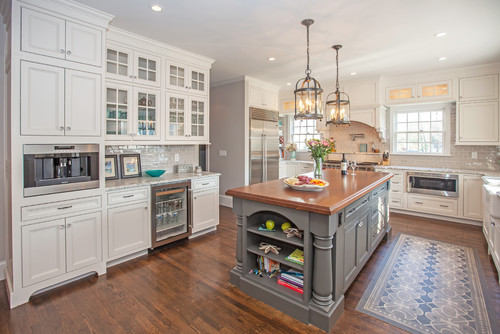
Neither material is universally “better”; the best choice depends on your priorities. For durability, low maintenance, and budget, laminate is superior. For authentic wood beauty, the ability to refinish, and higher-end aesthetics, veneer is the preferred option. As of 2025, laminate cabinets in Canada typically range from $150-$350 per linear foot installed, while veneer cabinets range from $250-$650, making cost a significant differentiator.
When selecting the best surface for your cabinets, a direct comparison of key attributes is the most effective way to make a decision. This approach helps you align your choice with your specific lifestyle, budget, and design aspirations. Here, we analyze the performance of both materials in the great Laminate vs Veneer for Cabinet Surfaces matchup. A detailed look helps clarify the best path forward for your Canadian home renovation project.
This cabinet material comparison highlights a central theme in the Laminate vs Veneer for Cabinet Surfaces choice. Laminate excels in engineered durability and effortless maintenance, making it a practical champion. In contrast, veneer offers the unparalleled natural beauty and the long-term adaptability of real wood, appealing to a sense of timeless craftsmanship. Your final decision depends on which of these valuable qualities you prioritize for your home.
3. What Are the Pros and Cons of Laminate vs Veneer for Cabinets?
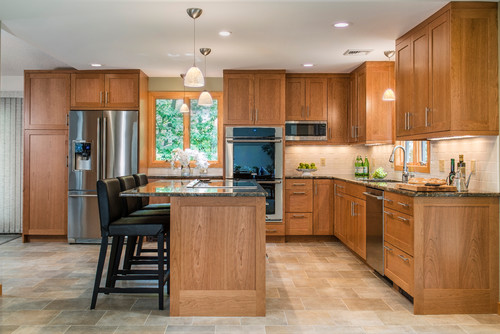
Every material has a distinct set of strengths and weaknesses. A deep understanding of these helps you envision how your cabinets will function in your daily life. This is a crucial step in resolving the Laminate vs Veneer for Cabinet Surfaces query for your home and ensuring you make a choice you will be happy with for years to come.
3.1. The Advantages of Choosing Laminate Cabinets
Laminate is a practical powerhouse. Its primary advantage is superior durability. The tough outer layer is highly resistant to scratches, stains, and heat, making it ideal for the demands of busy Canadian households. This resilience means your cabinets will look new with minimal effort, a strong argument in the Laminate vs Veneer for Cabinet Surfaces consideration. Its non-porous surface also makes it inherently hygienic and resistant to bacterial growth.
Another significant benefit is the vast array of design options. Whether you dream of a kitchen with the look of walnut, high-gloss white, or rustic oak, laminate can deliver that aesthetic with flawless consistency. This uniformity is a major selling point for modern and minimalist designs, simplifying the Laminate vs Veneer for Cabinet Surfaces decision for those seeking a sleek look.
Finally, affordability makes laminate an attractive option. It provides the look of more expensive materials without the high price tag, allowing you to achieve a luxurious design on a more accessible budget. This cost-effectiveness, combined with low maintenance, delivers excellent long-term value. This is a powerful factor in the Laminate vs Veneer for Cabinet Surfaces evaluation.
3.2. The Considerations When Choosing Laminate Cabinets
The primary drawback of laminate is its difficulty to repair. While it resists damage well, if a deep scratch, chip, or heat mark does occur, it cannot be spot-repaired or sanded down. In most cases, the entire door or panel would need to be replaced. This is a vital point of contrast in any Laminate vs Veneer for Cabinet Surfaces evaluation.
Additionally, while premium laminates look incredibly realistic, some people may find they lack the authentic depth and tactile feel of real wood. Water penetration at the seams or edges can also cause the substrate underneath to swell, leading to delamination over time. Proper edge banding and installation are critical to prevent this. This is a key factor when weighing Laminate vs Veneer for Cabinet Surfaces.
3.3. The Advantages of Choosing Veneer Cabinets
The undeniable allure of veneer is its authentic beauty. It brings the warmth, texture, and unique grain patterns of real wood into your home, creating a sense of timeless elegance. This natural variation ensures your kitchen has a character that cannot be replicated, a compelling reason for many Canadians choosing in the Laminate vs Veneer for Cabinet Surfaces debate. It can also be finished to achieve a range of sheens, from matte to high-gloss.
Veneer can also be repaired and refinished. Minor scratches can often be carefully sanded and re-sealed. This adaptability offers a level of longevity that laminate cannot match. From a sustainability perspective, veneer is an efficient use of hardwood, especially when sourced from Canada’s responsibly managed forests, making it an eco-conscious choice. This repairability is a major pro in the Laminate vs Veneer for Cabinet Surfaces conversation.
3.4. The Considerations When Choosing Veneer Cabinets
Durability is a key consideration with veneer; it is more susceptible to scratches and dents than laminate. It is also vulnerable to water damage, as excessive moisture can cause peeling or bubbling if not properly sealed. This makes the Laminate vs Veneer for Cabinet Surfaces choice critical for high-moisture areas.
Veneer also requires more mindful maintenance and typically has a higher cost. It can be susceptible to fading or darkening over time when exposed to direct sunlight. These practical factors must be balanced with your aesthetic desires when deciding on Laminate vs Veneer for Cabinet Surfaces.
4. How to Care for Laminate and Veneer Cabinets
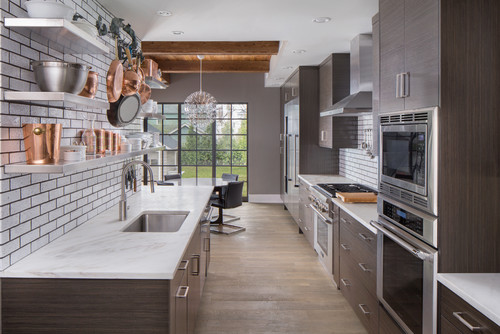
Proper care is essential to maximizing the life and beauty of your new cabinets. The methods for laminate and veneer differ significantly due to their compositions. Following these guidelines will keep your cabinets in pristine condition after you have made your Laminate vs Veneer for Cabinet Surfaces choice.
4.1. Maintaining Laminate Cabinet Surfaces
Laminate’s robust surface is wonderfully easy to maintain. For daily cleaning, use a soft, damp cloth and a mild, non-bleach dish soap. For tougher stains like grease, a mixture of water and vinegar works well.
What to Use:
- ✓Microfiber cloths
- ✓Mild dish soap diluted in water
- ✓A 50/50 solution of water and white vinegar
What to Avoid:
- ✓Abrasive cleaners or scouring pads (e.g., steel wool)
- ✓Harsh chemicals like bleach or ammonia
- ✓Wax-based furniture polishes
4.2. Maintaining Veneer Cabinet Surfaces
As a natural wood product, veneer requires a gentler approach. Dust regularly with a soft, dry microfiber cloth. For cleaning, use a slightly dampened cloth, wipe in the direction of the wood grain, and dry immediately. Never leave water standing on the surface.
What to Use:
- ✓Soft, lint-free cloths
- ✓A mild, pH-neutral wood cleaner
- ✓High-quality furniture polish (non-silicone) periodically
What to Avoid:
- ✓Excessive water or moisture
- ✓All-purpose cleaners containing harsh chemicals
- ✓Silicone-based polishes, which can create buildup
For minor scratches on veneer, a wax repair stick or a touch-up marker that matches the stain can often conceal the damage effectively. This repairability is a key difference in the Laminate vs Veneer for Cabinet Surfaces comparison.
Feeling overwhelmed by the Laminate vs Veneer for Cabinet Surfaces choices? You do not have to decide alone. The design experts at rtadepot.ca in Canada are here to help. Call us at +1 888 973 5636 for a complimentary design consultation.
5. Step-by-Step Assembly and Installation Guide
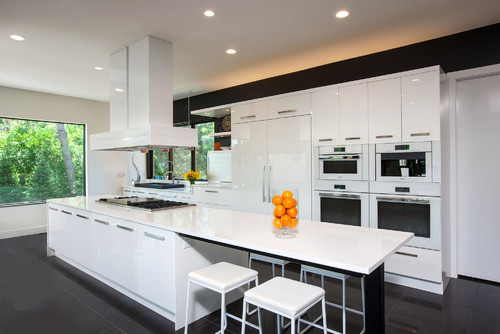
Many clients at rtadepot.ca appreciate the savings from assembling their own RTA cabinets. Our products are designed for straightforward assembly, a key factor after you’ve decided on Laminate vs Veneer for Cabinet Surfaces.
Essential Tools for DIY Assembly:
- ✓Rubber mallet
- ✓Screwdriver (Phillips and flathead)
- ✓Cordless drill with various bits
- ✓Level and tape measure
- ✓Safety glasses
- 1Prepare Your Space: Clear the room and lay down a blanket to protect your cabinet surfaces.
- 2Unpack and Inspect: Carefully unpack all boxes and cross-reference the parts list. Inspect each piece for damage.
- 3Assemble the Cabinet Box: Follow the instructions to construct the main cabinet box using the secure cam-lock system or pre-drilled screws.
- 4Install Hardware: Before attaching doors, it is easiest to install hardware like drawer slides or hinge plates.
- 5Attach Doors and Drawers: Once the box is sturdy, attach the doors and assemble the drawers, ensuring perfect alignment.
- 6Final Touches: Install handles or knobs. Your cabinet is now ready for installation.
While our RTA cabinets are user-friendly, a professional installation ensures perfection. The rtadepot.ca installation service, available across Canada, includes a pre-installation site check, precise assembly, and flawless installation, including leveling and securing cabinets. Visit us at https://www.rtadepot.ca/ to learn more. The Laminate vs Veneer for Cabinet Surfaces decision is just the first step.
6. Our Commitment: Warranty and Return Policies
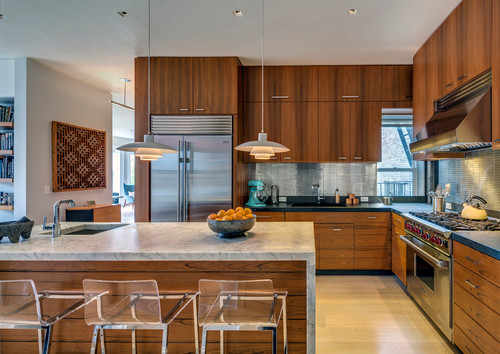
Investing in new cabinetry is a significant decision for any homeowner. It should come with peace of mind. At rtadepot.ca, we stand firmly behind the quality of our products. Our comprehensive warranty protects your investment, no matter where you stand on Laminate vs Veneer for Cabinet Surfaces.
Our Canadian warranties cover manufacturing defects in materials and workmanship under normal use. This typically includes the structural integrity of the cabinet boxes and the durability of door and drawer mechanisms. The specific terms vary by product line, but we provide all details upfront so you know what is covered when you select your Laminate vs Veneer for Cabinet Surfaces.
Our warranty generally excludes damage from improper installation, accidents, misuse, or exposure to extreme humidity or temperature—a key consideration in varied Canadian climates. We also have a customer-friendly return policy. If you encounter issues, our Canadian customer service team is here to assist. This commitment is central to the rtadepot.ca experience, making the final Laminate vs Veneer for Cabinet Surfaces choice easier.
7. Design Inspiration: Styling Your Laminate or Veneer Cabinets
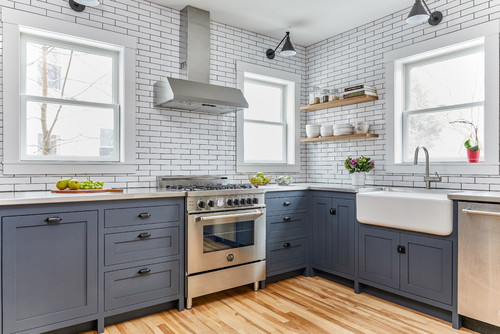
Your final pick in the Laminate vs Veneer for Cabinet Surfaces contest helps define your home’s aesthetic. Here are expanded ideas for incorporating these materials into different design schemes popular across Canada, from the west coast to the maritimes.
7.1. Modern and Minimalist Styles with Laminate
- ✓High-Gloss Grey Laminate: Pair this with a crisp white quartz countertop that has subtle veining. Use sleek, handleless doors and integrate your appliances with matching panels for a seamless look. This is a popular choice in urban Canadian condos.
- ✓Matte Black Laminate: Create drama by using matte black laminate for lower cabinets and pairing them with a warm, light wood-grain laminate for the uppers. This two-tone approach adds depth and sophistication.
- ✓Textured Wood-Grain Laminate: Achieve a warm minimalist or “Japandi” style with a textured laminate that mimics white oak or ash. The subtle texture adds a tactile element that elevates the design beyond a simple flat surface. This versatility is a strong point in the Laminate vs Veneer for Cabinet Surfaces comparison.
7.2. Transitional and Classic Styles with Veneer
- ✓Quarter-Sawn Oak Veneer: For a sophisticated transitional kitchen, use quarter-sawn white oak veneer on a shaker-style door. The straight, linear grain is modern, while the wood itself is classic. Pair with matte black hardware and a soft grey backsplash.
- ✓Walnut Veneer: The rich, warm tones of flat-cut walnut are iconic for mid-century modern designs. Use it on flat-panel cabinets and pair with vintage-inspired pulls and a backsplash of geometric tiles.
- ✓Cherry Veneer with a Dark Stain: Create timeless luxury with a dark-stained cherry veneer. This classic look is perfect for traditional homes, especially when paired with ornate hardware, detailed crown molding, and a natural stone countertop.
Your cabinets are the foundation of your kitchen’s style. Are you ready to resolve the Laminate vs Veneer for Cabinet Surfaces question and transform your kitchen? Let our design experts help. Contact rtadepot.ca at +1 888 973 5636 or visit our website. Your dream kitchen is closer than you think.









